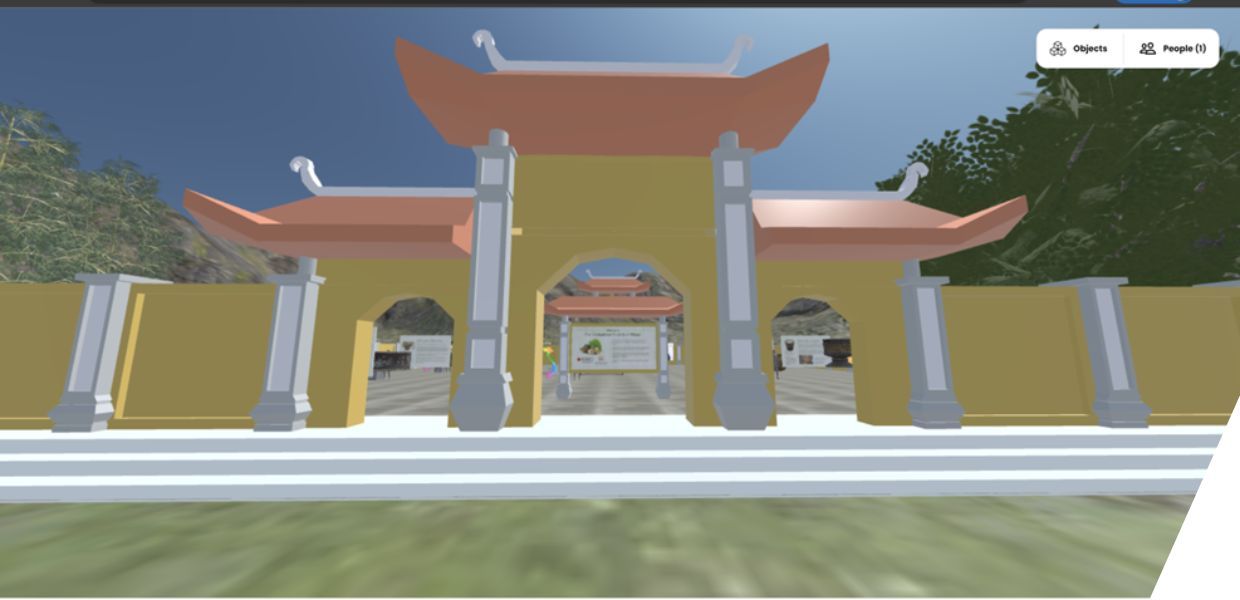Europeana’s ‘Built with Bits’ programme invited students and educators to combine collaborative learning experiences and digital technologies with the values of accessibility, inclusivity and sustainability at the heart of the New European Bauhaus movement.
The second iteration of the programme took place in late 2022 and early 2023. The winner of the ‘Beyond Borders’ project was Dr. Emma Duester, Lecturer at RMIT University Vietnam School of Communication & Design, in collaboration with Mr. Ondris Pui Lecturer at RMIT University Vietnam School of Communication & Design and Ms. Michal Teague Lecturer at RMIT University Vietnam School of Communication & Design. Hear about their project below!
Congratulations on your success in Built with Bits! Can you tell us about your institution?
RMIT University Vietnam is an Australian university in Vietnam. We work in the school of communication and design. We worked with the Vietnamese Women’s Museum for this project, which is a national museum in the capital city of Hanoi. Their mission is to raise awareness of women's history and contemporary life.
Why did you apply to take part in Built with Bits?
I put in the proposal because I wanted to raise awareness internationally about the lack of online resources around Vietnamese culture,which our research project aims to achieve. I thought that the Built with Bits initiative would be a suitable outcome for our project in that we could produce an accessible virtual exhibition of part of Vietnamese culture.
Tell us about your winning entry!
In Vietnam, the areca nut and the betel leaf are such important symbols of love and marriage that in Vietnamese the phrase ‘matters of betel and areca’ (chuyện trầu cau) is synonymous with marriage. Areca nut chewing starts the talk between the groom's parents and the bride's parents about the young couple's marriage.
For the project, we went through a process of digitising a betel nut collection. We started by photographing the artefacts and then used free software to stitch the photographs together. We then uploaded these onto Sketchfab, a free hosting platform. We then converted them for the Mozilla hubs platform. We arranged them in a culturally relevant environment as well, including silhouettes for scale, maps and information around the 3D models. The virtual exhibition includes 10 3D models. You can walk around and play with the models. Discover the project (available through Frame as of 2024).
As a University, why did you want to partner with a cultural heritage institution - the Vietnamese Women’s Museum - for this project?
I think it is important to raise awareness about women's history and contemporary life. There are not many specifically womens museums, which makes it a rare but important case.
What do you think is the value of using digital cultural heritage and immersive technologies in education?
It is important and valuable for Vietnamese students to see their own culture represented in class rather than only using resources from abroad. It allows students to see and use cultural heritage in class in a relevant way, using new digital technologies.
With March marking Women’s History Month, what steps do you think that cultural heritage institutions can take to acknowledge, surface and highlight women’s history in their own collections?
They could highlight certain pieces that respond to this theme. I went to an exhibition recently about ‘women through history’, which brought together paintings by women artists through history, highlighting their contributions.



